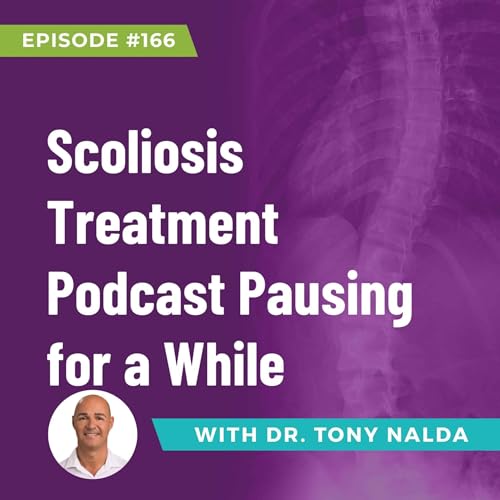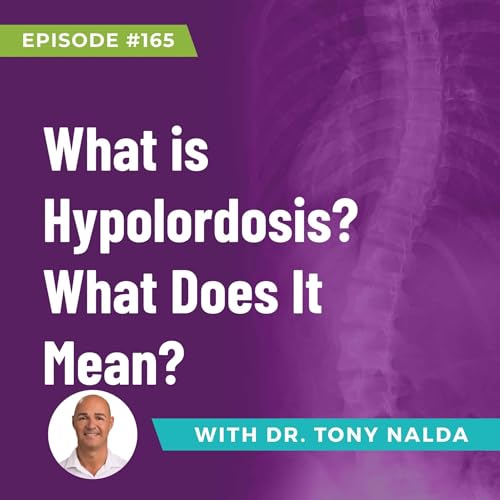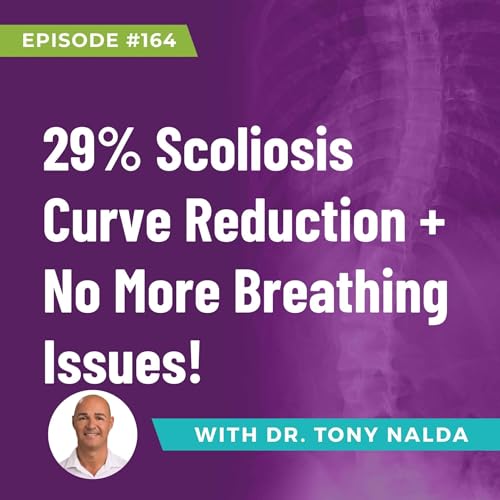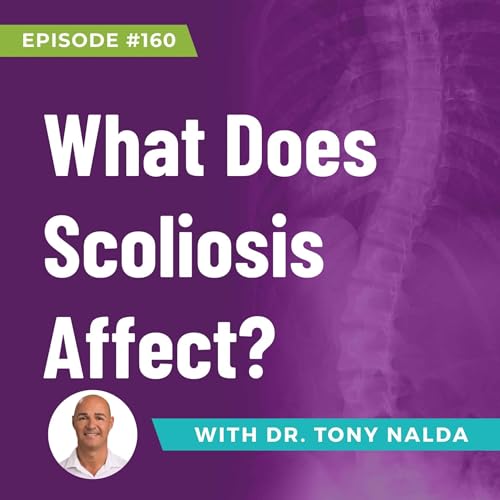🎙️ Podcast Show Notes Podcast Title: Scoliosis Treatment with Dr. Tony NaldaEpisode Title: What Can Scoliosis Affect? 📖 Episode Summary: Receiving a scoliosis diagnosis often raises immediate questions: How did this happen? What’s going to happen next? Can it be treated? In this episode, Dr. Tony Nalda provides a comprehensive look at what scoliosis really is—and what it can affect beyond just the spine. While most people associate scoliosis with cosmetic concerns or back pain, Dr. Nalda reveals how this condition can influence posture, mobility, balance, neurological function, digestion, and even respiratory capacity. Dr. Nalda outlines the difference between scoliosis in children—where progression is driven by growth—and in adults, where spinal asymmetry combined with gravity can lead to increasing compression, pain, and stiffness. He explains how the spine’s natural curves are meant to distribute stress and protect the spinal cord, and how scoliosis disrupts this design, leading to biomechanical and neurological consequences. Whether you or a loved one has been newly diagnosed or you’ve been managing scoliosis for years, this episode will give you a deeper understanding of how scoliosis affects the entire body—and why early, customized, and conservative treatment is so important. 🧠 Topics Covered: ✅ What scoliosis is: a sideways curvature of the spine with associated rotation ✅ How the spine’s natural curves are meant to support movement and protect the nervous system ✅ Why postural asymmetry (like uneven shoulders, hips, or ribs) can be an early sign of scoliosis ✅ Differences between childhood and adult scoliosis progression—and why pain is more common in adults ✅ How scoliosis can impact balance, coordination, and equilibrium ✅ The connection between scoliosis and neurological symptoms like numbness, tingling, or weakness ✅ Effects on organ function: including respiratory issues, restricted lung capacity, and digestive concerns ✅ The role of cerebrospinal fluid flow and how scoliosis can contribute to headaches and migraines ✅ Why “mild” scoliosis shouldn’t be ignored, and how every severe curve started small 💬 Key Quote: “Every severe curve was once small. As curves worsen, they cause more problems. As they cause more problems, they affect more functions. And as they affect more functions, they affect your life more. That’s why we recommend proactive treatment—early and often.” 🛠️ Treatment Philosophy: Dr. Nalda advocates for early and proactive scoliosis treatment—especially for young patients or adults newly diagnosed. At the Scoliosis Reduction Center, conservative care is personalized to the patient's curve type, severity, and health needs. The goal is to reduce the curve, preserve function, and avoid surgery through strategic, evidence-based treatment plans. 📘 Free Resource: Download the Free Guide:“How to Effectively Treat Scoliosis”Gain access to up-to-date, non-surgical treatment insights and understand your options.👉 scoliosisreductioncenter.com/free 🌐 Learn More: Visit ScoliosisReductionCenter.com to explore conservative treatment options tailored to your diagnosis. Artlist.io 847544
続きを読む
一部表示
 2 分
2 分 9 分
9 分 4 分
4 分 2025/07/2213 分
2025/07/2213 分 8 分
8 分 4 分
4 分 2025/07/019 分
2025/07/019 分 10 分
10 分
